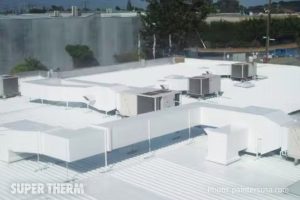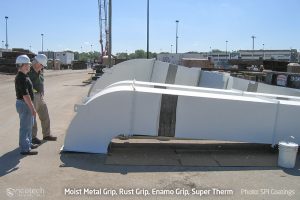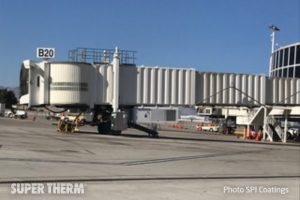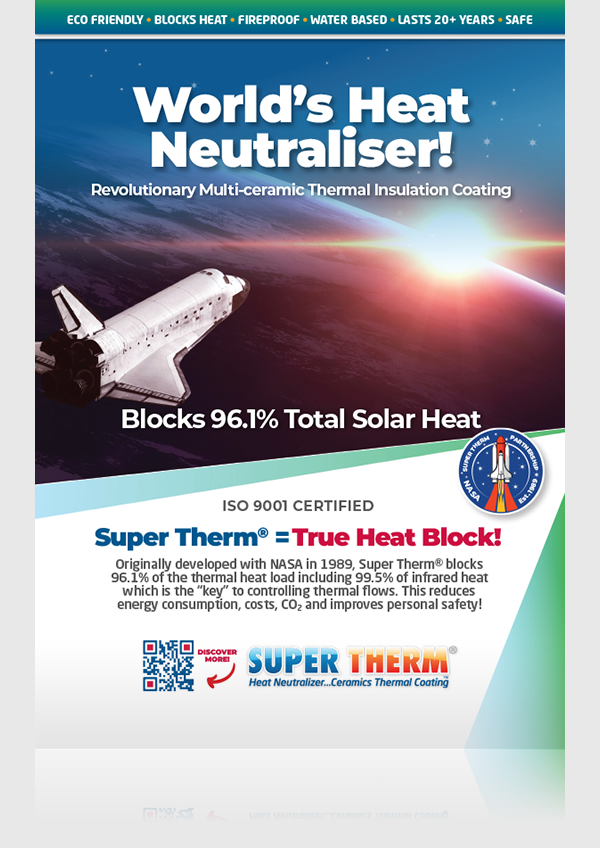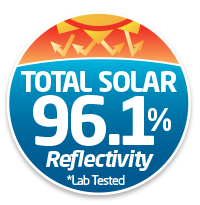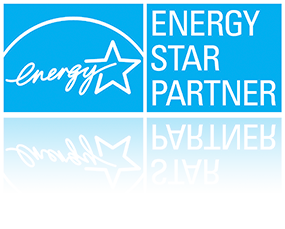Insulating Air Conditioning Ducts with Super Therm®
Energy efficient roof coating makes a major difference to air conditioning systems globally. Commercial energy efficient roof coating make a difference.
Energy efficient coatings can be used to save heating costs, lighting costs and can earn your CO2 benefits. Super Therm® insulative coating can block 96.1% of the absorption and transfer of heat as well as acts as a waterproof sealant layer.
If your home has ducted air conditioning, you may need to ensure that the ducts are also correctly insulated. Your air ducts are one of the most important systems in your home, and if the ducts are poorly sealed or insulated they are likely contributing to higher energy bills.
Your home’s duct system is a branching network of tubes in the walls, floors and ceilings; it carries the air from your home’s central air conditioner to each room. Ducts are made of sheet metal, fiberglass, or other materials. In Australia, however the ducting is made of flexible ductwork. They are a popular, bulk option and usually tubular and made of spring steel wire and enclosed inside a 2-ply, polymer plastic. Flexible ductwork materials are lightweight, easy to install, and the second least expensive type of ductwork. Flexible ductwork is also more prone to errors during construction, which costs a lot in maintenance and replacements.
Ducts that leak heated or cooled air into unheated spaces can add hundreds of dollars a year to your heating and cooling bills. You can reduce that loss by sealing and insulating your ducts. Insulating ducts in unconditioned spaces is usually very cost-effective. Existing ducts may also be blocked or may require simple upgrades.
R value 1.0 polyester insulation known as air conditioning is flexible ducting, or often called ‘flex’. The performance of each ducting system is widely impacted by the quality of its material, sizing, its R value and the way it’s been installed. In fact, without proper insulation, you can be losing up to 30% of the energy that is used to heat or cool your house (source).
Unfortunately houses in Australia typically have ducted running through roof space external to the thermal envelope at the ceiling of the house which is highly inefficient. Any energy leakage from the ducting goes straight into the 65°C roof cavity. If your home also has a poorly insulated ceiling of R2.5 in the roof you’re fighting an uphill battle.
A dark coloured roof can get your roof temperatures up over 70°C on hot days. Then if you use it for more than that 50 days per season, or 10 hours a day, it goes up as well. Another factor is the capacity. For cooling, the A/C needs to be sized for the hottest days. With a dark coloured roof, and 40 degrees outside, the roof is likely getting up towards 70°C. This alters the figures to:
Power loss for R1.0 = (70-18)*50/1 = 2600W
Power loss for R1.5 = (70-18)*50/1.5 = 1733W (Source)
So, if you’re looking at an HVAC unit that has 10,000 BTU of cooling energy and requires 1,200 watts of power to operate, then the unit has an EER of 8.3:
10,000 BTU ÷ 1,200 W = 8.3 EER
10,000 BTU ÷ 3333W = 3 EER
So what’s the issue with ducting…it all seems like the energy strategy is working…not really.



